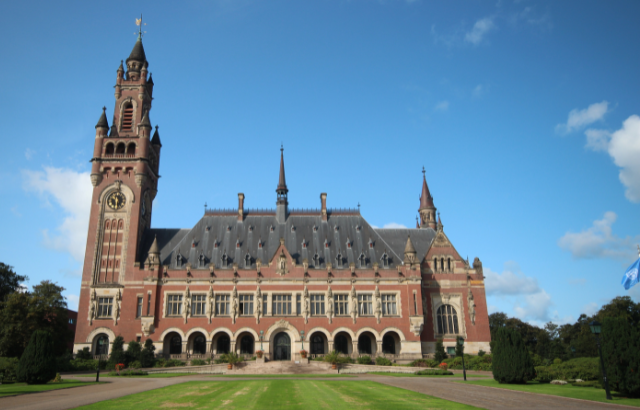What was the point of the party conferences?
Tim Bale, a professor in politics, ponders whether party conferences are still relevant today.
And yet. Year after year they go on, albeit more often in big city centres than spa or seaside towns (although this year I got to sample both, nipping over to Brighton with Labour and up to Manchester with the Tories). Presumably, then, there must still be a point to them.
In fact, there are several. The dirty little secret is that for at least some of the parties, they may well be money-spinners. That explains why so many of those attending these days work for pressure groups, lobbyists (sorry, I mean public affairs companies) and think tanks. These guys are paying top dollar to attend and then more of the same if they want a stand in one of the cavernous (the Conservatives) or cosy (Labour) exhibition areas, where they are joined by retailers selling books, jewellery, clothes, trinkets and tat, companies flogging their services and caterers providing the refreshments that everyone seems to need, whether or not they’ve managed to grab (depending on the time of day) a handful of Pringles and a glass of wine or similarly free cookies and coffee at one of the various fringe meetings (most of them commercially-sponsored) going on around the place.
Fringe benefits
For some attendees, the fringe is where it’s at. Indeed there are plenty of people who rarely and perhaps even never venture into the conference hall itself, except perhaps to listen to the one celebrity politician whose ‘day it is’ – Monday, George, Tuesday, Boris, Wednesday, Dave, etc, etc. At the Tory conference, there were hundreds of these smaller meetings – many of them packed to the rafters, notwithstanding the fact that they often seemed to covering an issue that had been covered the day before, would be covered the day afterwards and might even be being discussed at exactly the same time in a different room.
Perhaps it said something about the Tories’ will to win this year that there seemed to be so many meetings in Manchester addressing exactly how they were going to pull it off, given squeezed household incomes, an electoral system massively biased to Labour, and a complete failure to make inroads into northern, urban and ethnic minority communities. Most of the panellists – at least at these events – were politicians, print-journalists, think-tankers and pollsters. For good or ill, academic experts on voting behaviour were conspicuous by their absence. Whether they are missing a trick or are well off out of it, I’ll leave it to others to judge.
Ritual gathering
Nearly all of these events could have taken place – indeed, often do take place – in London. Indeed, there is a sense in which Conference is partly about letting people who live elsewhere actually see (and ask questions) of those they already read day-in-day-out and, for the most part, agree with. Whether many minds get changed here – or in the conference hall – is pretty doubtful.
And that, in some ways, is the point. Conferences are still a gathering of the tribe for a ritual that may have morphed over the years but is still essentially a symbolic reaffirmation that those who attend are not a strange and/or beleaguered minority. This is as crucial for mobilising the few genuine activists still left in seats that are safe or winnable as it is for helping to ensure the renewal of direct debits by those living in towns and cities (like Manchester, in the case of the Tories) where the party is thin, bordering on non-existent on the ground. Conference also offers the chance of a handshake, maybe even a quick chat with an MP or even a (Shadow) Cabinet Minister. It may seem strange to people who don’t take an interest in politics but these people – to members anyway – are celebrities. It’s a buzz to meet them and a warm fuzzy memory to take home, and maybe even drop casually into the conversation with friends and family (particularly political friends and family) back home.
Ups, downs and bounces
For non-members, of course, the motives and incentives are different. For think-tankers and lobbyists it may offer a chance to show funders and clients that they’re supposedly getting the agenda or having an influence with the politicians who really matter (or at least their special advisers). For journalists, it’s a chance to “take the temperature of the party”, to see who’s up and who might be going down – perhaps in the reshuffles that might take place between the end of the conference season and the start of the new parliamentary term. And for politicians, it’s a chance to prove their chops, if they’re up and coming, or that they’ve still got it, if they’re big beasts.
And for those at the very top of the tree (the leader and his or her entourage), conference presents one big media opportunity – made all the more special by the fact that all the parties have an unspoken pact with each other to give each other a free run. That opportunity is capped of course by the leader’s speech – a way to rally the troops, convince the journalists (and through them the folks at home) that you, and not your opponent, has what it takes. Talk of a “conference bounce”, however, in the end is largely misguided: either they all end up balancing each other out or any increase in support only lasts a few weeks before a party’s poll ratings return to their long-term trend.
For the vast majority who don’t go to party conference and who pay them next to no attention, then, they may as well not take place. But for those who attend, they fulfil a whole bunch of functions. Certainly, with the odd exception (and there wasn’t one this year), they leave pretty much everyone there feeling good about themselves, and maybe, in the grand scheme of things and in an otherwise cynical world, that’s no mean achievement.
This article was first published in The conversation
Related items

10 December 2024

10 December 2024
